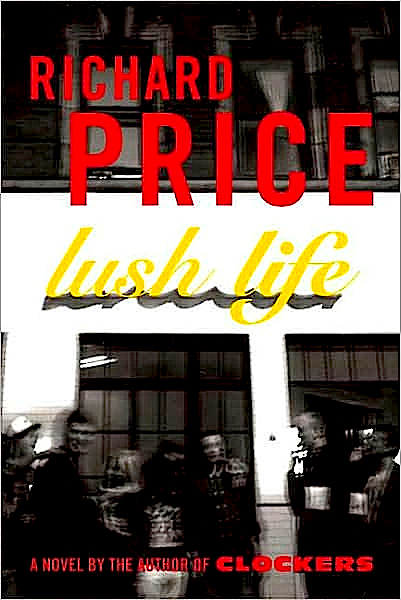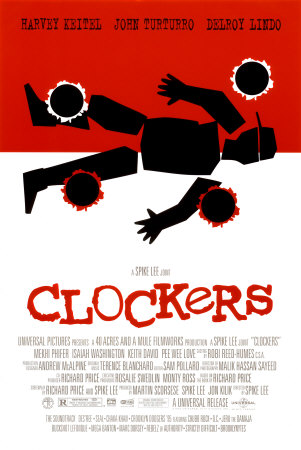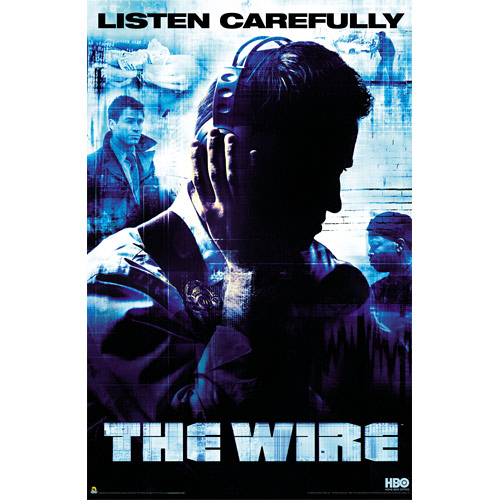 BY JEFF DEENEY Author Richard Price, in town to read from and discuss his new book, Lush Life, drew a full house at the Free Library last night. The evening kicked off with a laudatory intro from former City Paper editor-slash-Hollywood heavyweight Duane Swierczynski. Duane’s lead was shaped around the idea of “stealing life” — his description of the kind of fiction that reads so real you’d swear it was — that Price is known for. It’s unfortunate, Duane said, that a lot of young writers don’t understand that it’s OK, even beneficial, to just make shit up, so long as you don’t try to pass the end product off as non-fiction. The problem in publishing today isn’t writers like Price putting too much truth in their fiction, it’s writers like Margaret Jones (who wrote a book about growing in South Central LA despite really being from the suburbs) putting a little too much imagination in their truth. Believe me, Duane, the real nonfiction writers are right there with you.
BY JEFF DEENEY Author Richard Price, in town to read from and discuss his new book, Lush Life, drew a full house at the Free Library last night. The evening kicked off with a laudatory intro from former City Paper editor-slash-Hollywood heavyweight Duane Swierczynski. Duane’s lead was shaped around the idea of “stealing life” — his description of the kind of fiction that reads so real you’d swear it was — that Price is known for. It’s unfortunate, Duane said, that a lot of young writers don’t understand that it’s OK, even beneficial, to just make shit up, so long as you don’t try to pass the end product off as non-fiction. The problem in publishing today isn’t writers like Price putting too much truth in their fiction, it’s writers like Margaret Jones (who wrote a book about growing in South Central LA despite really being from the suburbs) putting a little too much imagination in their truth. Believe me, Duane, the real nonfiction writers are right there with you.
Price wasted no time getting things rolling, reading theatrically from the fast-paced opening of Lush Life. He delivered dialogue in a deliberately thickened version of his Noo Yawker’s accent, imitating the kind of cops he writes about. Lush Life takes place in the Lower East Side of the 21st century, a playground for “La Bohemer”: young college graduate transplants who are mostly looking to get drunk and throw up on other people’s front steps. The unbridled gentrification of the Lower East Side has changed the way crime there works. Homicides happen once in a blue moon in Manhattan anymore, so the book starts by following around a Keystone-ish set of cops in the “quality of life squad” who roll through the reveler-clogged midnight streets below Houston in an obviously fake-looking taxi. They’re mostly looking to bust kids with bags of weed and keep too many people from pissing on lampposts.
delivered dialogue in a deliberately thickened version of his Noo Yawker’s accent, imitating the kind of cops he writes about. Lush Life takes place in the Lower East Side of the 21st century, a playground for “La Bohemer”: young college graduate transplants who are mostly looking to get drunk and throw up on other people’s front steps. The unbridled gentrification of the Lower East Side has changed the way crime there works. Homicides happen once in a blue moon in Manhattan anymore, so the book starts by following around a Keystone-ish set of cops in the “quality of life squad” who roll through the reveler-clogged midnight streets below Houston in an obviously fake-looking taxi. They’re mostly looking to bust kids with bags of weed and keep too many people from pissing on lampposts.
Price read laugh-out-loud funny passages about the kind of traffic stops that make up the quality of life squad’s bread and butter; you get the sense that cops today in Manhattan kill a lot of time stopping Escalades loaded with spikey-haired bridge and tunnel d-bags for committing crimes of fashion. The lines of dialogue blew past in the jab-filled flurry that Price has brought to his many screenplays, including recent episodes of “The Wire.”
After reading, Price talked a bit about the strange stew of humanity that bubbles by the Williamsburg Bridge; while the Bohemers make up an increasingly large part of the population as gentrification spreads, there are still substantial subsets of Orthodox Jews, Puerto Ricans and Dominicans, Chinese immigrants and some black holdovers in the neighborhood’s few remaining housing projects. It’s very rare for these worlds to come in contact, but when they do the results can be disastrous, such as in the real-life case of Nicole DuFresne, the 28-year-old white girl from Minnesota who was gunned down by a young black teenager during a botched robbery in 2005.
DuFresne resisted when Rudy Fleming, then 20, put a gun in her face; she confronted the robber after he took her friend’s purse, saying, “What are you going to do, shoot us?” Fleming did just that, putting a bullet in her chest before making off with the purse. A similar murder lies at the heart of Price’s novel, which follows a detective working the case of a young, white partygoer gunned down during a stickup. Though he never mentioned the DuFresne murder, I was left to assume that it motivated the book; Price repeatedly made reference to drunk white kids from Minnesota and how bad things can happen when they step to the local toughs during a stick up. Maybe he made the connection unconsciously, maybe it was a coincidence, but to me it seemed intentional.
A similar murder lies at the heart of Price’s novel, which follows a detective working the case of a young, white partygoer gunned down during a stickup. Though he never mentioned the DuFresne murder, I was left to assume that it motivated the book; Price repeatedly made reference to drunk white kids from Minnesota and how bad things can happen when they step to the local toughs during a stick up. Maybe he made the connection unconsciously, maybe it was a coincidence, but to me it seemed intentional.
Price’s take on the LES of 2008 struck me, not surprisingly, as dead on. About 10 years ago, I lived on the corner of Rivington and Allen and even then, the changeover was well under way. If I was James Frey or Margaret Jones, perhaps I’d have taken this opportunity to spin a tale about wading ankle-deep through dirty needles to get to the J train every morning, but those halcyon days of open-air heroin markets were long gone by the time I got there. What I did see were a lot of poor Latin families watching the influx of wealthy white children from their propped-open tenement windows like it was Mars Attacks! on TV. You could tell which buildings were rent-controlled and which weren’t by the conditions of their facades; rent-controlled buildings full of Latin and Chinese immigrants looked like they were dipped in motor oil from the decades’ worth of impacted grime, and market rate buildings were recently overhauled with new marble, modern fixtures and state of the art security systems.
Since then, I imagine that the push of anyone but the wealthiest young professionals to the outermost fringes of the LES has gotten worse; I haven’t been there too often in the years since but the general trend of muscling minorities out of the real estate markets in NYC is well established. It makes interesting terrain for a crime novel. I kept thinking while Price was reading that this is the noir of nothing doing, set in a world with no real danger. The times are such in NYC that a Manhattan cop’s biggest pinch on any given day is a $40 bag of weed.
On the surface that seems like a good thing, but is it really? Does it mean that New York has conquered crime, or simply that Manhattan has been remade into an aristocrat’s fortress, pushing the poor to the far reaches where they can kill each other without bothering anybody too much (because, as Price strenuously noted, black-on-black crime in NYC often doesn’t make the back page, let alone the front page).
simply that Manhattan has been remade into an aristocrat’s fortress, pushing the poor to the far reaches where they can kill each other without bothering anybody too much (because, as Price strenuously noted, black-on-black crime in NYC often doesn’t make the back page, let alone the front page).
My only criticism of Price is that he loves spinning stories so much that there’s hardly ever time left for any real analysis. He’s a dialogue master, and hilariously funny to boot, but isn’t as good at crystallizing big ideas. I know a lot of people disagree with me on this, but I don’t think he ever crosses over from crime fiction into what I would consider literature. Duane’s intro included a quote saying that Clockers was our Grapes of Wrath; it’s a tempting comparison but not one that I’d make. Though I won’t be mad if you do.
Price’s Q & A session was a rare joy; I’m one of those listeners who often turns off “Radio Times” because the callers are too batty, too agenda-driven, too self-aggrandizing or just incoherent. I’ve squirmed through a couple Q&As during previous library speakers sessions, but Price seems like the kind of guy who could come up with a captivating five-minute reply if you asked him for the date. There was an audience-wide wince at one kinda-sorta racist question about “wolf packs” of black teens in Philly who apparently have been murdering elderly white people . . . and getting away with it! Funny, I follow crime reports pretty close and don’t remember those. Price handled the question with characteristic smoove.
Lush Life sounds like a worthy read, as is most of Price’s writing. If you’ve lived in downtown New York and want to see how things have changed since you left, it scores added points for bringing the bizarre Lower East Side of 2008 forcefully and humorously to you with crystal clarity. For the average Philadelphian, it provides a window into the weird world that is the “Bohemer” playground of downtown Manhattan. Don’t hesitate, if you start taking notes now you’ll probably be able to write the same book about Northern Liberties in another five years.
ABOUT THE AUTHOR: Jeff Deeney is a freelance writer whose work has appeared in PW, City Paper and the Inquirer. He focuses on issues of urban poverty and drug culture.
